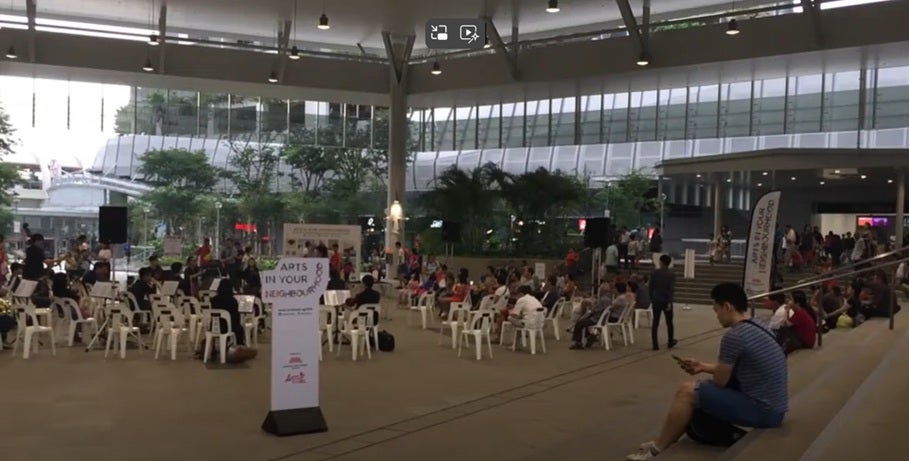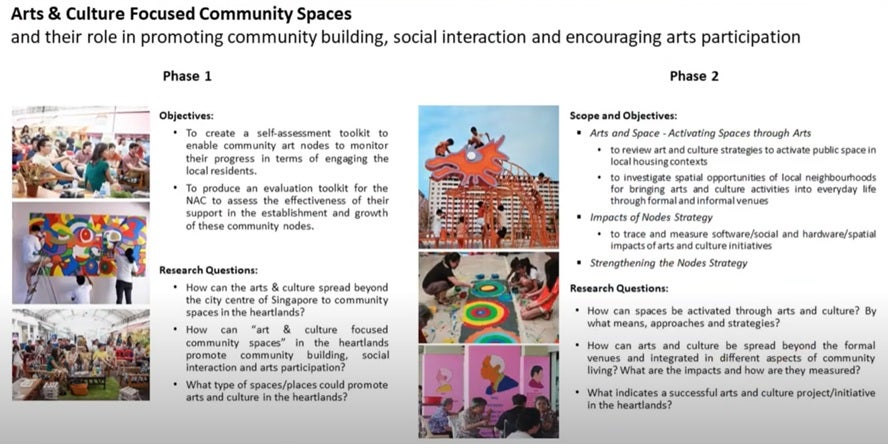Art and Culture Focused Community Spaces and Their Role in Promoting Community Building, Social Interaction and Encouraging Arts Participation
Principal Investigator: Assoc Prof CHO Im Sik
Background
As the 2011 National Population Survey on the Arts presents, Singaporeans’ participation in at least one art event in the last years has increased for all forms of art across Singapore from 40% in 2009 to 48% in 2011 (NAC 2012). Additionally, the number of art performances has nearly doubled from 4,531 in 2003 to 8,663 in 2011 (MICA 2012). Increased attendance rates and numbers of events however do not necessarily indicate that arts and culture activities are encouraging or linked to more meaningful social interactions within Singapore. With this in mind, a series of recommendations were presented to the Singapore Government by the Arts and Culture Strategic Review Steering Committee in 2011 urging more arts programmes to be focused on active community participation in the arts (MICA 2011; ACSR 2012). These recommendations have led to the creation of a series of new programmes which seek to promote more active community participation in the arts, particularly through NAC focused programmes in community spaces in Singapore’s “heartlands”.
In bringing community members together to participate in arts-related programmes, both intrinsic and instrumental benefits can result. For instance, while residents gather to create a community art project, such as a mural, they are both developing social bonds and deepening trust relationships while building community symbols, strengthening their local identity, and enhancing their imagination and self-expression as individuals. With these benefits of participating in arts and cultural activities in mind, this research project seeks to use a community-based assessment approach to evaluate the intensity of community engagement in the arts.
This project seeks to reference CSAC’s previous work on evaluating culture’s contribution to sustainability, within the “Benchmarks, Best Practices and Framework for Sustainable Development” project, through social cohesion at the city level. Specifically, we propose to examine which of the assessment tools used to evaluate culture in the city can be scaled to the community or neighborhood level for a community- based assessment.
Research Objectives
1. To conduct a literature review and to document the developmental process of arts/culture-focused community centres in the pilot communities.
2. To create a self-assessment toolkit to enable community art nodes to monitor their progress in terms of engaging the local residents.
3. To test the self-assessment tools to evaluate the intensity of arts engagement in the two pilot communities.
4. To produce an evaluation toolkit for the NAC to assess the effectiveness of their support in the establishment and growth of these community nodes.




